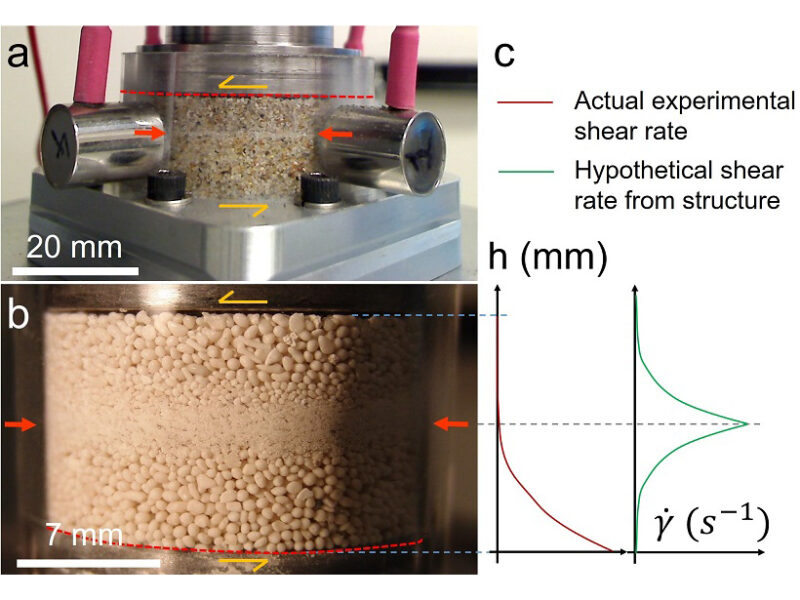
Geologists commonly observe layers in fault zones that are thought to be a biproduct of the shearing process: finer-grained material is created as the rocks in the shear zone grind against each other. Geophysicists and geologists often interpret the formation of fine-grained layers in sheared fault gouge as evidence of slip localization within a narrow plane where fine-grained materials are produced and accumulate. Siman-Tov and Brodsky [2018] revisit this concept. Using experiments in an annular shear cell (rheometer) setup, they show that the thin fine-grained layer is formed by shear-driven size-segregation in granular materials, and not by localization in the thin layer; fine materials segregate farther from the boundary, where granular shear rate is low. This work thus has the potential to change the way we interpret shear/slip localizations in fault zones.
Citation: Siman‐Tov, S., & Brodsky, E. E. [2018]. Gravity‐independent grain size segregation in experimental granular shear flows as a mechanism of layer formation. Geophysical Research Letters, 45. https://doi.org/10.1029/2018GL078486
—Gavin P. Hayes, Editor, Geophysical Research Letters
The post A New Spin on Grain Segregation in Fault Zones appeared first on Eos.
from Eos https://eos.org/editor-highlights/a-new-spin-on-grain-segregation-in-fault-zones?utm_source=rss&utm_medium=rss&utm_content=a-new-spin-on-grain-segregation-in-fault-zones
via IFTTT

